Do you think an inflated balloon pops out when you insert a skewer into it, as always? Of course, Yes!
But there is a simple trick to insert a sharp-ended skewer into the balloon without blasting it. Let’s learn about this Non popping balloon experiment.
This activity suits every kid out there, from kindergarten to high-grade children. Though it appears easy, and you may not succeed in one or two attempts.
But do not lose hope. You can do it in the first attempt if you learn the science and technique to do it properly.
Ok then.. Here is how you can insert a skewer through the inflated balloon without popping it.
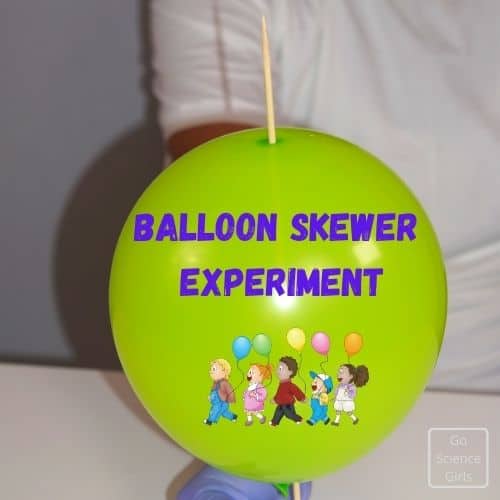
Balloon Skewer Hypothesis
Give your child an inflated balloon and ask him/her to push a skewer into it without popping it! Let them take an educated guess before performing the activity and ask them to compare their hypothesis to the experiment’s actual results.
Balloon Skewer Experiment – Explanation
Materials Required
Here is the shortlist of supplies to perform this cool and fun activity.
1) Balloons
2) A Wooden Skewer (Take extra care while your kids handling these sharp ended objects)
3) Dish Soap Liquid/ Washing up Liquid (optional)
4) Balloon Blower (optional)
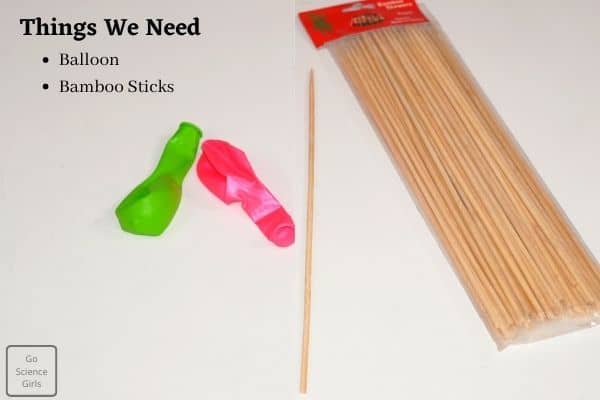
*Product Links are affiliate links – Your support is highly appreciated
Instructions to Push a Skewer through the Balloon
Step-1: Inflate the Balloon
Pick your own choice of the balloon, i.e., color, shape, size, etc. Then, blow it until its 3/4th way.

Once your balloon is suitable to go, give it a knot in the balloon’s neck part such that there is no leakage of air. And the size of the inflated balloon remains the same till the end of the experiment.
Step-2: Preparing the Wooden Skewer
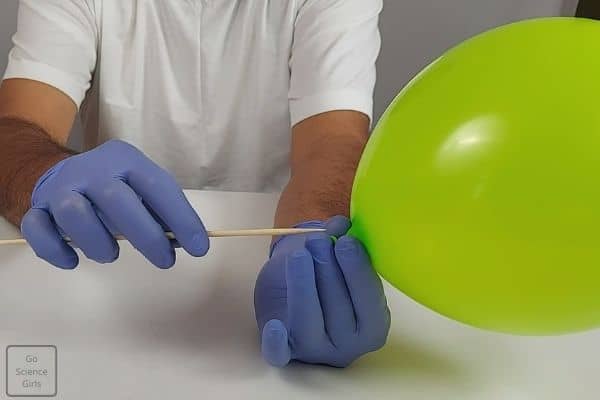
Please take a few drops of dish soap in a bowl and dip the end of the skewer into it. The dish soap liquid’s oil content acts as a lubricant and stops the balloon from popping out easily.
Step-3: Decide the place where to insert the Skewer
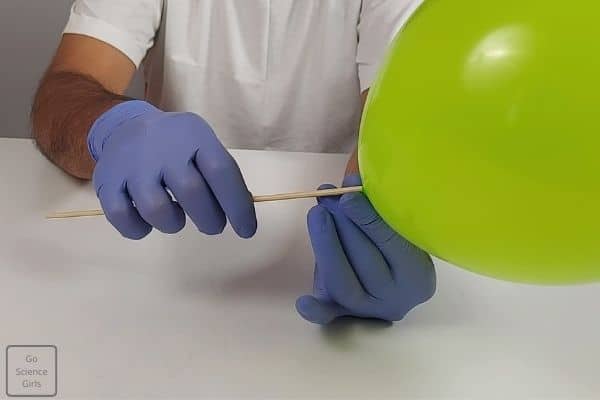
Finding the best place to insert the skewer into an inflated balloon is a small trick. Find the thickest areas of the balloon, which we generally see at the bottom part of the inflated balloon. I.e., at the neck of the balloon.
Step-4: Inserting the Skewer
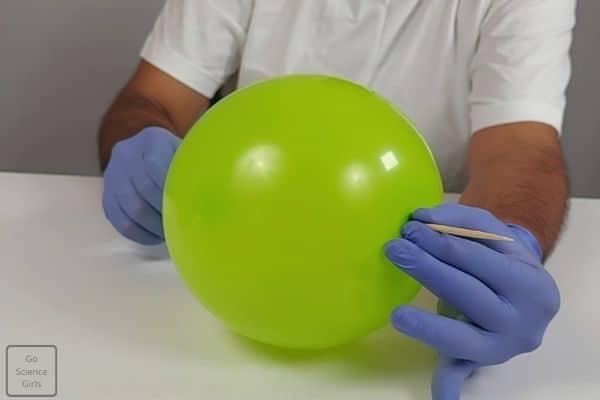
Bring the soap liquid-coated tip of the skewer near the thickest area of the inflated balloon and slowly push it away from you.
That is in the direction which takes into the balloon. Continue to push the skewer gently to the other side of the balloon.
At this point, you need to be careful and do not push the skewer into the knot where the balloon is tied off. But choose the thick area near the knot.
Do not panic if you fail to insert the skewer without popping it! Please do it again using another balloon!
Just remember to give gentle pressure and spinning through the thick areas of the balloon. Practice until you get success.
Science Involved in Pushing a Skewer through the Balloon
Balloons are made of rubber-like materials, which is why they expand when filled with sufficient amounts of air.
The long strands of polymer molecules create rubber-like structures by scattering the rubber molecules tightly and side by side.
When the balloon inflates, the air pressure makes the rubber molecules arrange themselves one above the other. This arrangement provides enough space for the balloon to inflate as long as we fill it with air. But if you reach its maximum elasticity point, the balloon blasts.
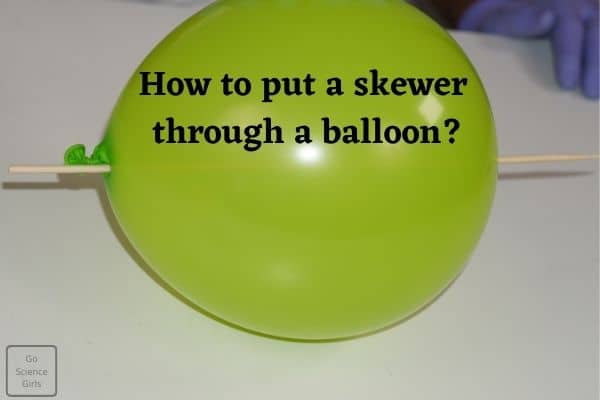
In this activity, we are selecting dense areas on the inflated balloon. In these areas, the rubber molecules are scattered least, which means there are tightly packed rubber molecules.
So, when you insert a wooden skewer in these areas using gentle pressure, the balloon expands. And takes the skewer inside without blasting. Besides, the soap liquid works effectively as a lubricant and reduces the surface tension present on the balloon.
It allows the skewer to enter inside the balloon quickly without leaking any air and popping the balloon.
It is how we can insert a wooden skewer quickly and gently into an inflated balloon without blasting it. Amazing right! Try out and amaze your friends and family! Happy experimenting!
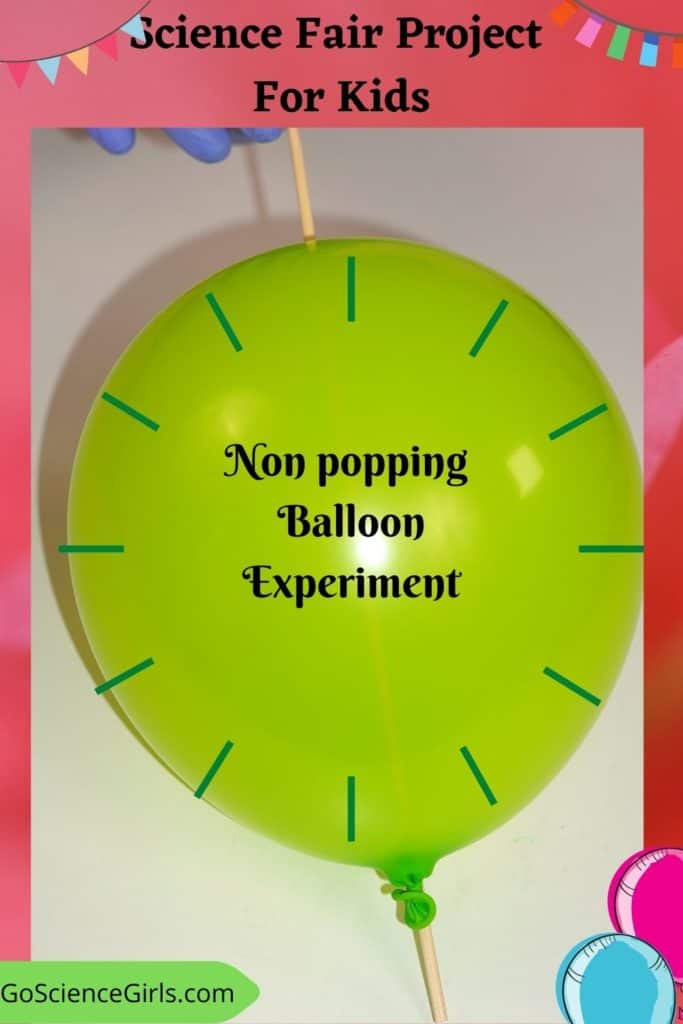
FAQ’S
Due to most minor surface tension, the polymer molecules close the area around the skewer when inserted. Eventually, the lubricant substance stops the leakage of air from the balloon. It is the reason why a skewer penetrates through an inflated balloon without bursting.
Dip your pencil into a washing-up liquid or dish wash soap and spread it nicely using your fingers until its halfway. And then push it slowly inside the balloon by giving gentle pressure. Push it until it comes out from the other side of the balloon. That’s it; your pencil sticks to an inflated balloon without blasting or leaking air.
Balloons are the products of long chains of polymer and rubber molecules. They stretch and arrange themselves when filled with sufficient amounts of air. But when there is a sudden puncture on the expanded balloon, the balloon bursts.
Here is what you need to do if you want to make an unpoppable balloon:
1) Inflate the balloon smaller in size than the skewer size you picked
2) Give it a knot properly after releasing some air to relax the rubber
3) Push an oil or dish wash soap coated skewer tip over the thick areas of the balloon
4) Continue pushing the skewer slowly using gentle pressure to the other side of the balloon
5) That’s it, just keeping two holes on opposite sides, you can make an unpoppable balloon
